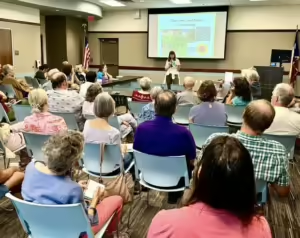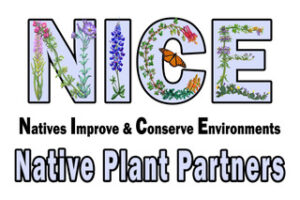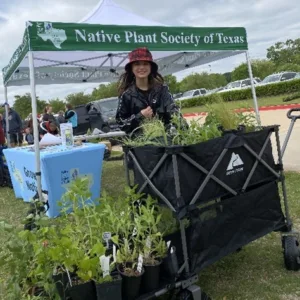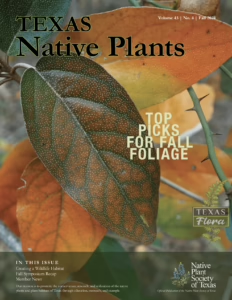Welcome to the La Bahia Chapter of NPSOT including Washington County and the five surrounding counties within its boundaries.
We are in both the East Central Texas Plains and Texas Blackland Prairies, divided between Austin and Houston, and includes plains, prairies, and woodlands landscapes. Our average rainfall is about 42 inches with peak rainfall usually in May and October, Hardiness Zone 9a.
Use the menus in the bar above to get more information relevant to our area, including plant lists, activities, and more.
You can use the interactive map to the right to learn more about our local ecoregions, and find your location. Zoom in to find your ecoregion. Click on an ecoregion for more details.
Please join us at a plant sale and/or swap, field trip, or other activity.
Upcoming Events
Soil Health Series: Part 2 – Everything To Know About Mulches
Thursday, December 5 at 10:30 AM
at Brenham’s Nancy Carol Roberts, Memorial Library
100 Martin Luther King Jr. Parkway, Brenham, TX

Native Plant Society Virtual Events
La Bahia Chapter News

First Annual Plant Sale – October 5, 2024
October 5, 2024 10:00am – 2:00pm Location: The McLoughlin Property, 1402 Church St., Brenham The LaBahia Chapter is having a PLANT SALE on October 5, 2024 in Brenham, Texas! Fall

October No Frills Farm Tour, RSVP Now
Saturday, October 26th: 9 AM Property of John Ferguson, owner of Nature’s Way Resources, who was our July speaker on SOIL. John welcomes us to his property between Round Top

Creating a Pollinator Paradise with Lauren Simpson
Thank you to Lauren Simpson for her amazing and entertaining presentation “Creating a Pollinator Paradise” last month. Over 60 native plant enthusiasts were in attendance, free native seeds from Lauren,

New NICE Partner Nurseries and Event April 13
Saturday, April 13, The NICE Committee will set up a table at the Antique Rose Emporium to share information about selecting and growing native plants and promoting NPSOT. If you

Garden Signs Available
We’ve had a great response for the NPSOT Biodiversity and Members gate/garden signs. We still have 7 of the Biodiversity and 6 of the Members signs, $20 apiece, which will

Fall Plant Sale – Save the Date – October 5
The LaBahia Chapter is having a PLANT SALE on October 5, 2024 in Brenham, Texas! Location: The McLoughlin Property, 1402 Church St., Brenham Fall is the best time to plant
State Native Plant Society News

Where Plateau Meets Prairie
In autumn, Cornus drummondii offers a beautiful display of vividly-colored reddish leaves. The aging leaves of Ulmus crassifolia, covered with tiny fungal leaf spots , will soon fall to enrich

Creating a Wildlife Habitat with Native Plants
The heavily wooded lot includes Cedar Elms (Ulmus crassifolia), Live Oaks (Quercus virginiana), and Pecan Trees (Carya illinoinensis). By Lindsey Townsend, Tyler Chapter Every garden begins with an idea—and a

Fall 2024 Member Magazine
Executive Director’s Message | President’s Message | Fall Symposium Recap | Top Picks for Fall Foliage | Creating a Wildlife Habitat | Exceptional Native Plants | Plateau Meets Prairie | Member News


